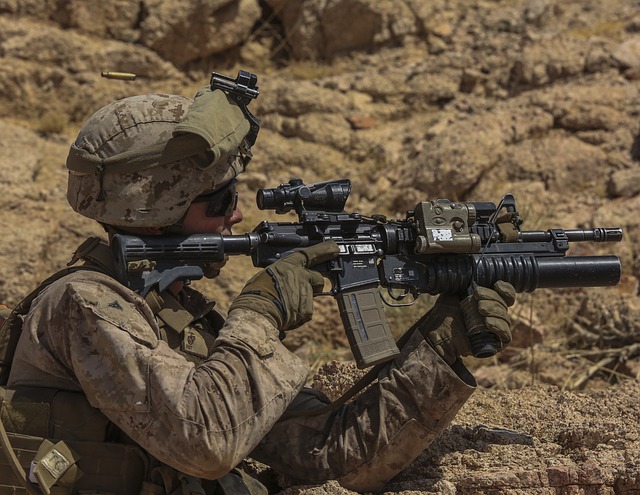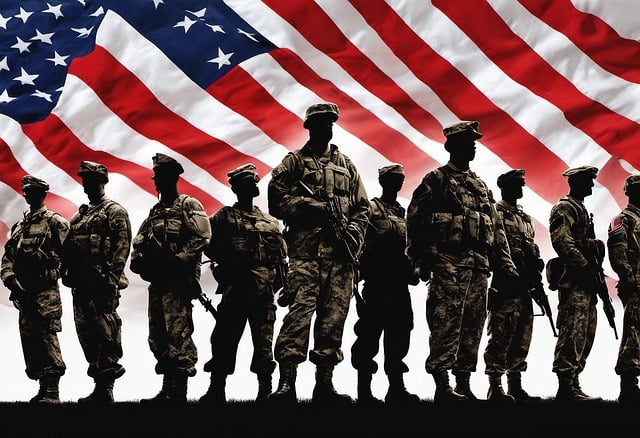The US Army Reserve Flag, with its 50 stars and 13 stripes, is a powerful symbol of unity, honor, and remembrance for Reservists' service. Displayed at military memorials, it fosters pride and appreciation for the military community's resilience and dedication. Protocol-driven rituals, like flying it at half-staff, ensure this flag receives the respect it deserves, while its presence at notable locations like the National Memorial Wall in Washington D.C. and state cemeteries across the US pays tribute to America's history and freedom.
The US Army Reserve Flag, a powerful symbol of military service and sacrifice, is a common sight at memorials and monuments across the nation. This article delves into the rich history and deep symbolism behind its display, exploring the traditions that have shaped this practice. We’ll navigate the protocol governing flag placement, highlighting notable examples where the US Army Reserve Flag stands as a testament to the resilience and honor of those who serve.
- The Symbolism Behind US Army Reserve Flag at Memorials
- History and Tradition of Displaying Reserved Flags
- Protocol and Guidelines for Monument Placement
- Notable Examples: Memorable Military Memorials with US Army Reserve Flags
The Symbolism Behind US Army Reserve Flag at Memorials

The US Army Reserve Flag, with its distinct design and vibrant colors, holds profound symbolism when displayed at military memorials and monuments. The flag’s primary purpose is to honor and commemorate the service and sacrifices of the US Army Reserve units throughout history. Each element of the flag has specific meaning; the stars represent the 50 states of the Union, symbolizing unity and national pride, while the stripes pay tribute to the original 13 colonies, emphasizing the foundation of American freedom.
The flag’s central emblem, featuring a silver star enclosed in a circle of 13 alternating red and white stripes, represents the Army Reserve’s global presence and its readiness to respond to any crisis. The silver star also signifies peace, hope, and the unwavering commitment to protect and defend the nation. When raised at memorials, the US Army Reserve Flag serves as a powerful visual reminder of the resilience, courage, and dedication demonstrated by Reservists in service, fostering a sense of pride and remembrance among both military personnel and the general public.
History and Tradition of Displaying Reserved Flags

The tradition of displaying reserved flags at military memorials and monuments holds deep historical significance, particularly in the United States. This practice dates back to the early days of the US Army Reserve, where flags served as a powerful symbol of unity, honor, and remembrance. Originally, these flags were flown during parades, ceremonies, and special occasions to represent the dedication and sacrifice of service members. Over time, the custom evolved to include displaying them at permanent memorials as a sign of respect and gratitude.
The US Army Reserve Flag, in particular, is reserved for significant events and locations, emphasizing its importance within the military community. It is often raised at monuments dedicated to fallen soldiers, veteran’s halls, and historical sites related to military history. This display not only pays tribute to the past but also serves as a reminder of the ongoing service and commitment of the Army Reserve. The tradition continues to be embraced, fostering a sense of camaraderie and appreciation for those who have served and sacrificed for their country.
Protocol and Guidelines for Monument Placement

When it comes to displaying the US Army Reserve Flag at military memorials and monuments, protocol and guidelines must be strictly followed to honor and pay respect to those who have served. The flag placement is a meaningful ritual that requires precision and attention to detail. According to the Department of Defense, the US Army Reserve Flag should be displayed at ceremonies, events, and significant sites as a symbol of recognition and gratitude for the contributions of the Army Reserve units.
Specific guidelines dictate the proper manner in which to place the flag. For instance, it must be flown at half-staff during official ceremonies honoring veterans or active-duty personnel who have passed away. The flag should also be displayed on special occasions such as Memorial Day or Veterans Day. In addition, when positioning the flag near other flags, it takes precedence and is typically placed to its own right (when facing north) in a vertical arrangement with other colors. Adhering to these protocols ensures that the US Army Reserve Flag is shown the respect it deserves, creating a meaningful tribute for all to witness.
Notable Examples: Memorable Military Memorials with US Army Reserve Flags

At many military memorials and monuments across the United States, the US Army Reserve Flag holds a prominent place, serving as a powerful symbol of sacrifice and service. Notable examples include the National Memorial Wall in Washington D.C., where thousands of flags represent the lives lost and stories of those who served. Each flag is carefully raised and lowered, performing a daily ritual that pays homage to the resilience and bravery of the Army Reserve.
Another striking instance is seen at state-level memorials, such as the Texas State Cemetery, where dedicated sections display US Army Reserve Flags alongside other branches of the military. These displays not only honor individual service members but also foster a collective appreciation for the role of the Army Reserve in shaping America’s history and safeguarding its freedom.
The US Army Reserve Flag, a powerful symbol of military service and sacrifice, continues to be an integral part of honoring our nation’s history at memorials and monuments across the country. Through its display, we pay tribute to the dedication and resilience of the Army Reserve units that have answered the call to duty throughout the years. By following proper protocol and guidelines, these flags serve as a lasting testament to our shared military heritage, fostering a sense of respect and remembrance among visitors and ensuring their significance for generations to come.
